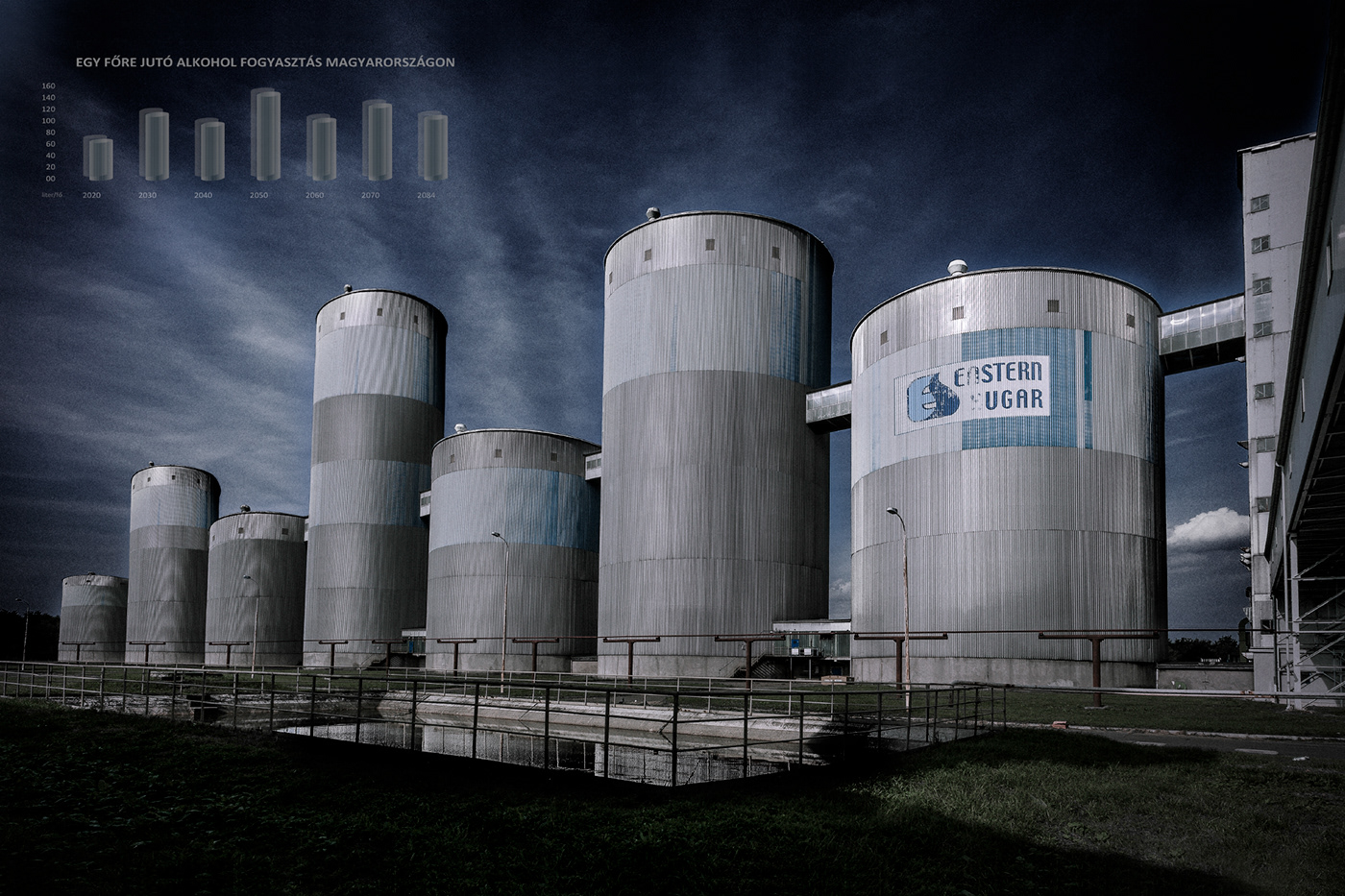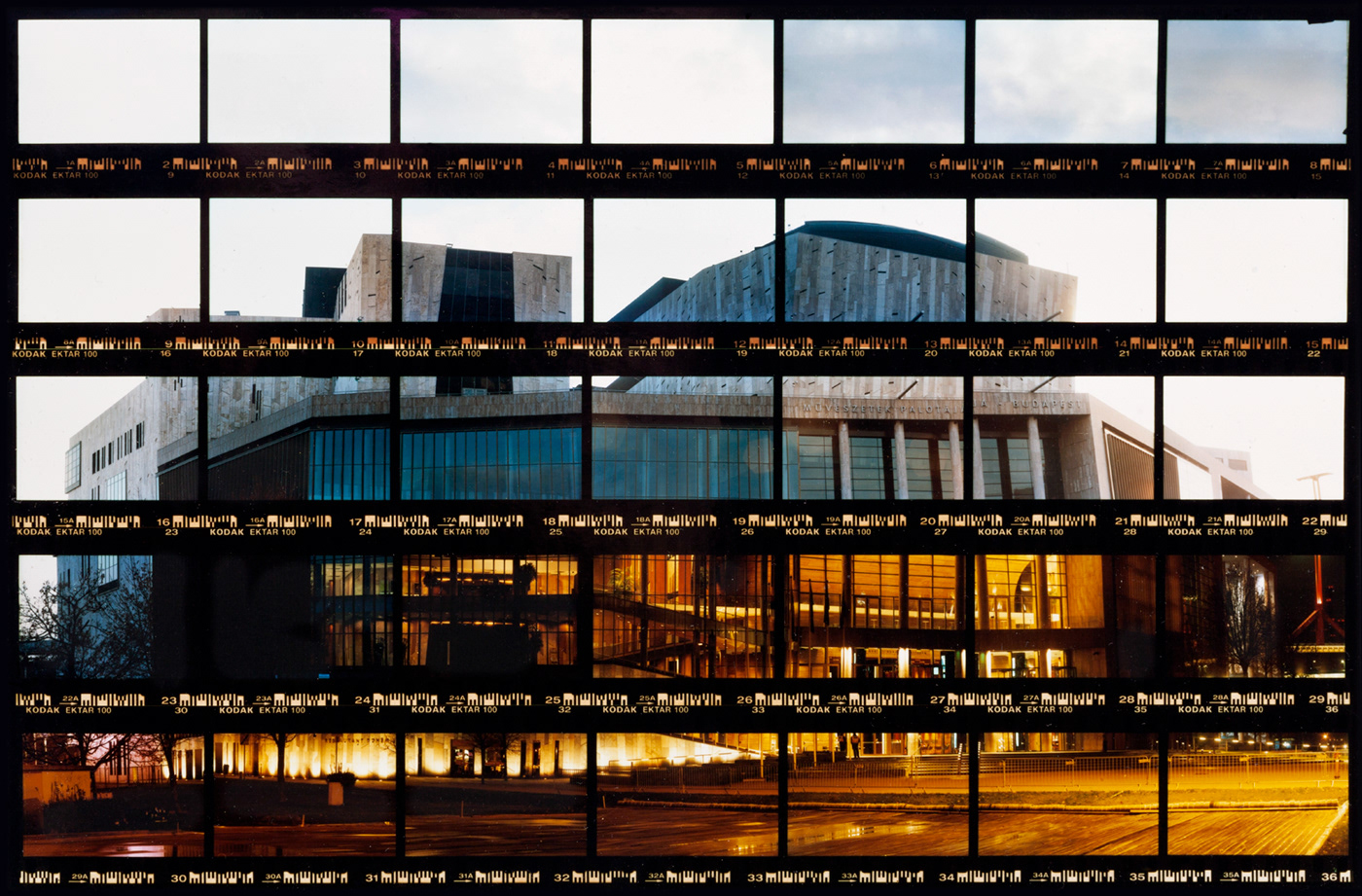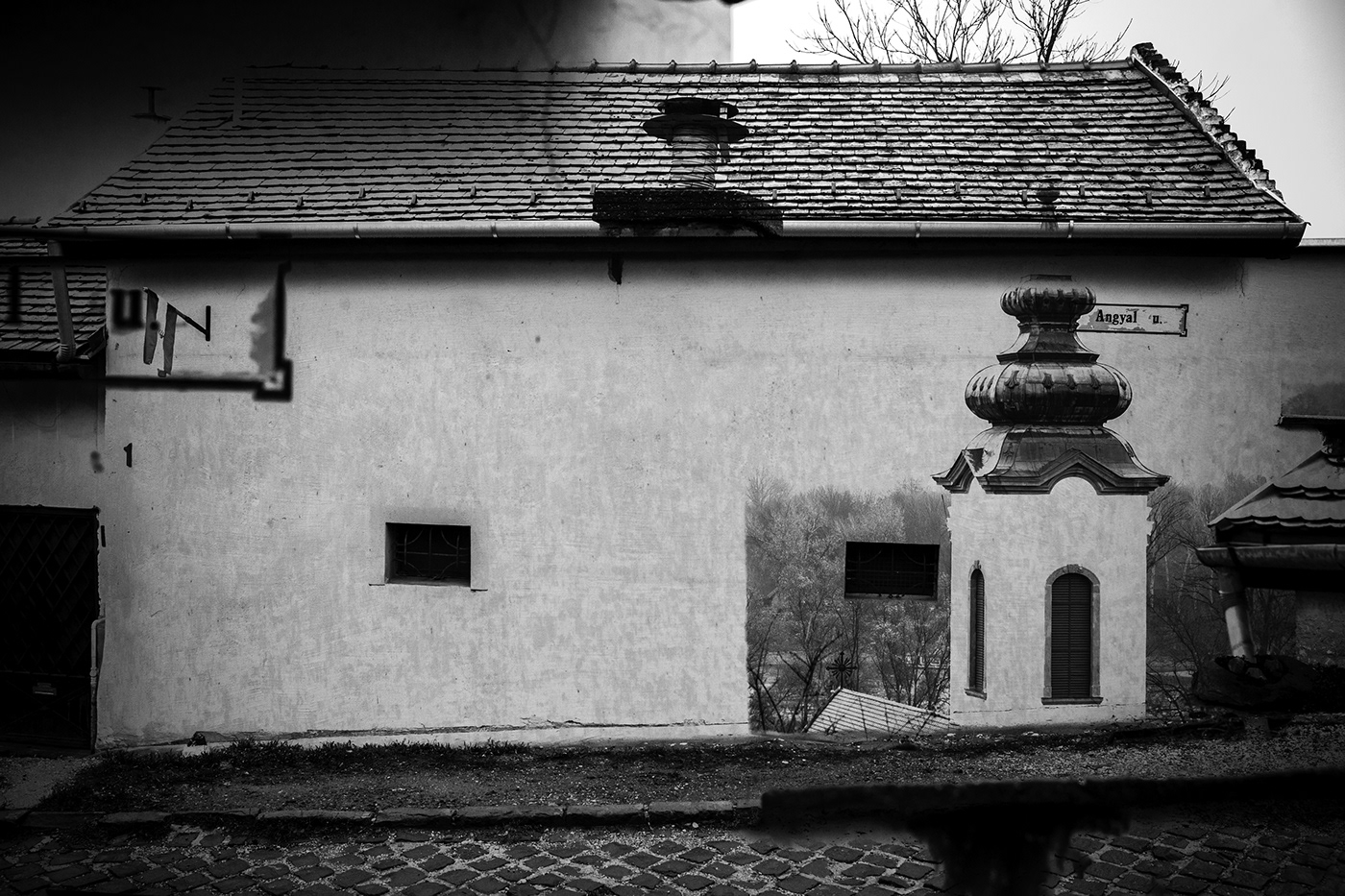CONCEPTUAL
p h o t o g r a p h y

NÉPSZABADSÁG?
2016
cinemagraph video
A so-called cinemagraph, or more commonly known as a GIF, is a hybrid digital image file that contains the characteristics of a still image and a motion picture. My idea was based on observing the behavior of a person reading a newspaper. In a cavalcade of people walking by or hurrying in a public space, the person reading press may seem still. I inverted this observation; I froze the rushing people in the form of a still image, thus giving room to the reading man to move. The work was done the week after the closure of the editorial room of ‘Népszabadság’ using one of the last printed copies. ‘Népszabadság’ was founded on 2nd of November 1956, during the Hungarian Revolution, and by many, its closure was considered a political act which put the liberty of speech at risk in Hungary.








UFT (Unidentified Flying Tower)
2016
giclée print
50x33 cm
If we consistently delete some parts from a series of pictures, it can undergo a radical change of meaning. My series draws attention to the serious problem of accessing current water resources, which is causing a problem in developing countries. Today, old industrial buildings are disappearing, including the water towers, which are valuable parts of our culture.





CHART CITY
2017
giclée print
50x33 cm
Thinking about the future of Hungary, I assumed that the indicators and diagrams that are present in our lives and determine it will come to real life in the form of buildings. These confront us with the gap in between actual life situations and indicators. The realization of my idea created a utopian world of images and thoughts. This way, it became possible for mortgage holders to face their failure on a daily basis or monitor current immigration policies in immigrants’ housing estates. The diagrams, indicators are fictional formulations of important problems, which I predicted until 2084 based on real trends.






PROFILE
2015
giclée print
50x33 cm
Doctors prepare a section from the diseased tissue so that they can observe the problem with their microscope. In this project, I am also looking for engravings and imprints on buildings which are flat projections of living spaces. They are also, in a broader sense, traces left behind by urban life.

DAY and NIGHT
2016
c print
26x17 cm
The problem of color temperature can appear spectacularly on a color photographic film. If we expose artificial light to a daylight sensitive film, we will not get natural colors. In my study, I used a 35 mm film to capture the image of a building in the form of a contact print which is composed of 5x7 frames. From left to right, I constructed the entire composition of the building from a subset of images by exposing one frame every half hour. The study shows the changes of color temperature on the building over 18 hours.




SHOT
2018
silver gelatin print
100x218 cm
Cameraless photography only uses light and light-sensitive materials or chemicals as a starting point. My project was actually about to look for the boundaries of this genre or to even cross them.
The basic question of the Shot project is how, when and why a dark space can become a photographic imaging device, and how I can make the moment visible when an image is born.
The space hermetically sealed from the light and a firearm are the two components of the cause-effect relation that creates the image. I place a light sensitive paper in the dark space, and I shoot at the front of its wall with a pistol. The exposure occurs at the moment of shooting, its subject is the act of creating the photograph, which is a shooting man himself. The projectile also pierces the photographic raw material, creating a strong index on the image, thus making it carry the cause of the exposure as a wound. The pistol and the box are two ordinary objects which – combined – create a device capable of photography, evoking the basics of optics and the photographic image. The size and shape of the hole created during the shooting is unpredictable, and both the exposure and the quality of the image also change, so the final image has a unique, accidental character.
I prepared a smaller sized study prior to the final image.

DEEP BLUE
2018
silver gelatin print
40x40 cm
The basics of my work are built around mapping a longer-term process. I realized this in a chess game and implemented it within the technical framework of the photogram. By the end of the millennium, the development of artificial intelligence had reached such an advanced level that it was already worth comparing the knowledge of humans with the machine created by them. Therefore, I chose a real game of chess, where Garry Kasparov and the supercomputer Deep Blue developed by IBM first met.
The image is an imprint of this game that I replayed in the darkroom. It is recording a photographic imprint of a kinetic process, which has a beginning and an end. The abstract geometric shape system and tone scale of the image are a consequence of the moves and it shows what positions the pieces took on the surface – which is the chessboard itself. The steps of a chess game can be thus decrypted in a certain sense, and the match can be analyzed.






APPLEGRAM
2018
silver gelatin print
15x20 cm
The aim of this luminogram study is to visibly represent the space and tone of a sphere as a geometric shape and gradually move it to the abstract. I lit the apples with a candle, and then projected the light from different angles and distances onto the object with a few small, concave mirrors. Finally, I captured these tonally rich shadow images on a photographic magnifying paper.























SKY VIEW FACTOR
2019
giclée print
When we visit New York, we instinctively look up to the sky. Where all direction and vector lines point to, towards the living spaces that humans build – not only – out of necessity, but with great pride and zeal, because we have run out of land to build on horizontally. It points to the direction of the unattainable. The one-time passer-by can also wonder how much we have left of the gift that nature offers without consideration, how long we can keep up with this without consequences. How much of sky, light, sun, and free breath we have left after this titanic undertaking. Thinking about this, shapes and silhouettes emerge that passers-by can see.
These are negative shapes, visual proportions and patterns that the modern world of architecture leaves behind.
If we look up to the sky, the basic directions and dimensions lose their meaning. Forward, backward, left or right fades into the background compared to the top and bottom. The only handhold is the image cut out of space, drawn by the light on my camera’s ground glass, so the pulsation of the perceived – otherwise incomprehensible – world can make sense for a short while.
The classic view camera shows an inverted picture which means that I can naturally see the negative form system appearing from the clouds and the sky. The photographic negative is translucent and blackens when exposed to light, thus visibly revealing the “negative” area that is the focus of my observation.
The Sky View Factor is an indicator of modern architecture that examines and shows how livable cities are burdened by the weight of ever-taller buildings. The SVF is a key indicator for studying urban climate which also determines the general well-being of citizens. My work is a photographic study of the remains of the sky, an imprint.

PLASTICOFOLIO
2016
silver gelatin print
This is a series of photographs taken with a view camera to showcase the products of an existing plastics company. The products are mass produced low-end quality bottles, which I replicated with the most precise photographic process. They were printed on photographic magnifying paper instead of negatives, which resulted in unique pictures in reverse tone order. With this gesture, I would like to draw the attention to the presence of plastic that is omnipresent in our lives.


TRAIL of LAJOS VAJDA
2015
giclée print
18x24 cm
It is a study realized in the spirit of Lajos Vajda, namely a digital montage. It was carried out in Szentendre with a digital camera that allows real-time double exposure without being able to see the composite pictures. Therefore, the images photographed on top of each other must first be put together in our minds. The resulting image mostly evokes a “mental image” generated by our memory.

COFFEE BREAK
2015
wet plate negative
17x23 cm
The long career of our family coffee maker seemed to come to an end in 2004 after an unfortunate Sunday lunch. The clogged and exploded family device came to life again on the living room wall in the form of a picture. The most important condition in the procedure of this more than one hundred years old complicated photographic technique is that the sensitized glass negative can only be exposed while it is still wet. This is about the period of time while we consume a coffee.




MY ARNOLFINI MARRIAGE
2006
silver gelatin print
28x42 cm
Paraphrase as a genre motivates and inspires mostly with it being very personal. I expropriate it to narrate the major events in my life. I tell the story of my marriage through well-known paintings of Vermer, van Eyck, Klimt and Picasso.



MY FAMILY GOTHIC
2018
giclée print
29x40 cm
A paraphrase is the rethinking of an existing work. I chose one of my mother’s favorite paintings - Grant Wood’s American Gothic - as the basis of my composition. I realized with my parents in front of the facade of their own house, each year.


MITOLOSCAPE
2018
giclée print
100x66 cm
The starting point of this project is the scale system of 17th century classical fine art painting, which I used as a framework. In these works, the depiction of nature and environment was highlighted in comparison to the narration of mythological and biblical stories. The narratives of my stories are personalized, the characters are my friends. These tales are based on real events of their lives, which I have interpreted in my own way. I dedicated these pictures to them as a pledge of my friendship.
MY COLOR STORY
2015
ink on paper, video
How can I tell a story with colors? I recorded my daily routine of an average week broken down by activity on a round shape paper disc with colored pens. I played this using an old vinyl record player and captured it with a video camera. The video shows a standardized, color-condensed extract of my own life.
MUSIC for DARKROOM
2017
silver gelatin print, video
This project is trying to push the natural boundaries between motion picture and still image and creates a connection between them at the same time. It is the process of creating a black and white analog image which is recorded as a motion picture. Imaging happens to the rhythm of “musical” raindrops which are actually the paper developer liquid, creating a complete, slowly evolving paper image. My work also unfolds a geometric problem: the mapping of droplets falling in three-dimensional space on a flat surface through a motion picture, which is also the process of the evolution of the still image itself over time. My motivation explores the possible connections between music and imaging. During the creative process, I found the form of music which is best suited for the work in the darkroom.
FICTUS
2017
video
My work is based on a fiction that could come true if speech lost its practical function in our society and its role remained purely ritual, reminding us of a forgotten communication technique.
SHOT STORY - MYSELF THREE TIMES
2017
video
In this work I was concentrating on the problematics of the relationship between the still image and the motion picture. I paired this with the violent and crude nature of photography. Andy Warhol’s famous Triple Elvis picture inspired me for this work. This video work is actually a moving picture study created from simulated still images.
LIGHT and SPACE
2015
silver gelatin print, video
17x23 cm
This is my first self-built camera obscura and this project was carried out with it. Adjusting the various parameters of the camera obscura hole during the design and construction of the device is essential. I created a test series of five images and placed them next to each other using the stop-motion technique. Controlling the amount of light on the still images exposes different slices of space correctly. If we attach these images one after the other, they create the illusion of movement. In fact, we see the supposed movement of light.




